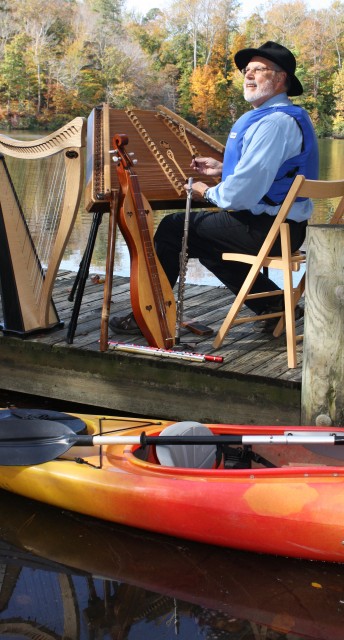Sometimes, especially in folk music and pop music, arrangers use a simple formula (‘KISS: Keep it simple, stupid,’ as they say) to present a melody or a verse-chorus pattern, and they make sure that they don’t demand anything significant of the listener.
Well, as a lifelong aficionado of Classical music, which in its best form does demand that the melody and chord structure develop in a complex way over the course of the piece, I crave creativity and depth in arrangements. (May I say here that much folk and pop music does indeed involve creative arrangement, but some of their arrangements certainly don’t!)
So several years ago I put together one of my lists, compiling ideas that can be kept in mind when you’re preparing a piece --- whether it’s a new composition of your own or an arrangement or performance of an existing piece --- so it can have a truly creative component. (I included a number of references to my own recorded tracks as examples of many of the ideas.) Here it is:
Concepts:
- A piece that moves you: How can an arrangement have that same effect?
- Each performance can be a different variation on the arrangement, depending on the particular situation.
- Think of how arrangements can create a picture or tell a story.
- Work toward a desired effect over a series of verses and a series of songs.
- Make sure the total of your own arrangements cover a broad array of applications.
- Make it unique and special in some way, not just convenient or imitative; search for your own voice.
- How do your favorite musicians get certain effects? Analyze their details.
Details:
- Many fast songs have too many notes to add many harmonies to them logically, so emphasize the melody mostly by itself (e.g., Cuckoo’s Nest).
- Emphasize melody by hitting its notes harder than other notes.
- Change from section to section or verse to verse.
- Change keys, e.g., from C to D, or from D to C, or from D to G, or from G to D, or from C to E, or from C to A --- each with its unique effect.
- Change meter, e.g., 4/4 to ¾ (e.g., Star of the County Down).
- Change scale, e.g., major to minor (e.g., Bound for the Promised Land).
- Change mood (e.g., Whitetails on High Places).
- Change style (e.g., Balm in Gilead, Comin’ Thro’ the Rye).
- Change chord choices (e.g., Silent Night).
- Come full circle: end with episode similar to beginning, or end medley with first piece (e.g., Auld Lang Syne, Shady Groves).
- Get ideas from other instruments (e.g., Loch Lomond, Wayfaring Stranger: guitar; Hiking in Highland Firs: drums; Planxty Irwin, Soldier’s Joy: piano.)
- The last note of one piece can be first note of next (e.g., Wayfaring Stranger/Wade in the Water).
- Look for unusual ways to vary arrangement (e.g., Marie’s Wedding key change from phrase to phrase in my live solo version).
- Make the piece simpler or more complex in overall effect, or changing within the arrangement.
- Make a medley of many pieces (e.g., Kemp’s Jigg medley).
- Make a medley of two pieces alternating (e.g., Wayfaring Stranger/Wade in the Water).
- Use thematic grouping of songs(e.g., in my Cuckoo’s Nest medley it's all titles with birds' names, and Johnny Has Gone for a Soldier is combined with When Johnny comes Marching Home).
- Slow the melody way down and add many notes (e.g., Planxty Irwin, Fairest Lord Jesus).
- Speed up a slow piece (e.g., Balm in Gilead).
- Set up startling contrasts within a piece or between pieces (whole set lists can be arranged for contrast; spreadsheets are helpful for mixing and matching by dragging and dropping).
- Use extra sections --- intros, bridges, and codas --- and vary how they apply in different songs.
- Decide between steady rhythm and rubato --- the type of sense of movement through time.
- Allude to or quote another piece (e.g., Holly & Ivy/Silent Night).
- Adapt the melody to fit the needs of the arrangement (e.g., Ash Grove).
- Use higher notes for some harmonies, especially for dramatic variations near the end of a piece. (E.g., Erev Shel Shoshannim, Planxty Irwin) Work toward climactic points!
- Make lists. Make idea lists while you're considering arrangements so you get something down on paper or in a file, to get the thought process going, and to have something to refer to and work with. (E.g., this blog's list!!)
This is just a limited set of fairly random ideas; perhaps some will stand out to you as things to consider, and many more may come to mind. At any rate, strive to make your own arrangements and performances special and creative!





Comments